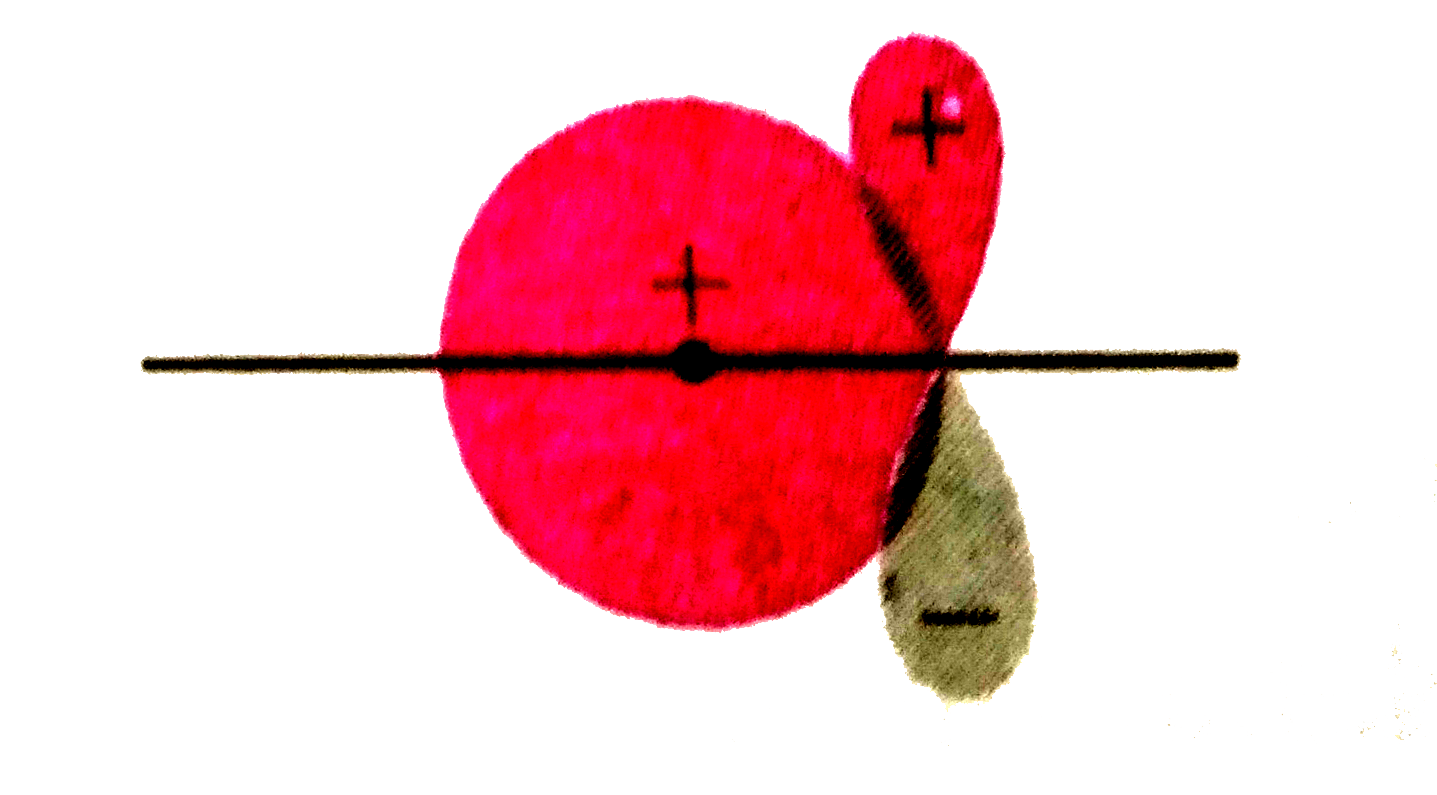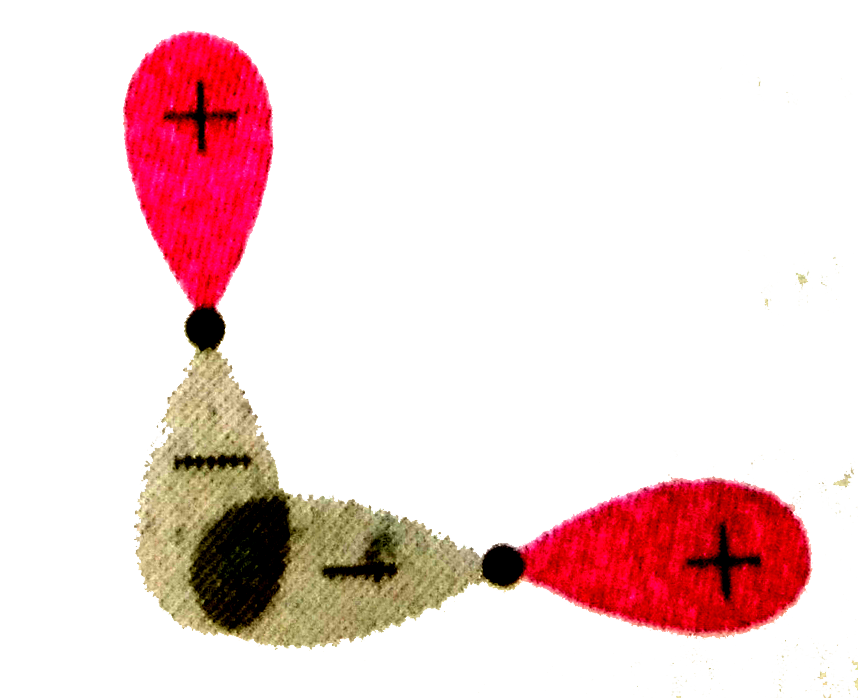According to VBT the extent of overlapping depends upon types of orbitals involved in overlapping and nature of overlapping. More will be the overlapping and the bond energy will also be high.
Which of the following combination of orbitals does not form covalent bond (x-axis is inter nuclear axis) :
s+py
py+py
dyz+dyz
dxy+dxy
The correct Answer is:A
To determine which combination of orbitals does not form a covalent bond according to Valence Bond Theory (VBT), we need to analyze the given options based on the type of orbital overlap that occurs.
1. Understand the Concept of Orbital Overlap:
- According to VBT, the formation of a covalent bond requires overlapping of atomic orbitals. The extent of overlap affects the bond strength and energy. There are different types of overlaps: sigma (σ), pi (π), and delta (δ).
2. Identify the Given Options:
- We have four combinations of orbitals to analyze:
- Option A: s + p_y
- Option B: p_y + p_y
- Option C: d_xz + d_yz
- Option D: d_xy + d_xy
3. Analyze Each Option:
- Option A (s + p_y):
- The s orbital is spherical, and the p_y orbital is oriented along the y-axis. When these orbitals approach each other along the x-axis (the internuclear axis), there is no effective overlap because the p orbital does not align with the s orbital. This results in zero overlap, meaning no covalent bond is formed. This is the correct answer.
- Option B (p_y + p_y):
- Both p_y orbitals are oriented along the y-axis. When they approach each other along the x-axis, they can overlap sideways, forming a pi bond. Therefore, a covalent bond is formed here.
- Option C (d_xz + d_yz):
- The d_xz and d_yz orbitals are oriented in the xz and yz planes, respectively. When these orbitals approach along the x-axis, they can overlap effectively and form a delta bond. Thus, a covalent bond is formed.
- Option D (d_xy + d_xy):
- The d_xy orbitals are oriented in the xy plane. When they approach along the x-axis, they can also overlap effectively to form a pi bond. Hence, a covalent bond is formed.
4. Conclusion:
- After analyzing all options, we conclude that Option A (s + p_y) does not form a covalent bond due to zero overlap.
Final Answer:
Option A: s + p_y does not form a covalent bond.
---
- According to VBT, the formation of a covalent bond requires overlapping of atomic orbitals. The extent of overlap affects the bond strength and energy. There are different types of overlaps: sigma (σ), pi (π), and delta (δ).
- We have four combinations of orbitals to analyze:
- Option A: s + p_y
- Option B: p_y + p_y
- Option C: d_xz + d_yz
- Option D: d_xy + d_xy
- Option A (s + p_y):
- The s orbital is spherical, and the p_y orbital is oriented along the y-axis. When these orbitals approach each other along the x-axis (the internuclear axis), there is no effective overlap because the p orbital does not align with the s orbital. This results in zero overlap, meaning no covalent bond is formed. This is the correct answer.
- Option B (p_y + p_y):
- Both p_y orbitals are oriented along the y-axis. When they approach each other along the x-axis, they can overlap sideways, forming a pi bond. Therefore, a covalent bond is formed here.
- The d_xz and d_yz orbitals are oriented in the xz and yz planes, respectively. When these orbitals approach along the x-axis, they can overlap effectively and form a delta bond. Thus, a covalent bond is formed.
- The d_xy orbitals are oriented in the xy plane. When they approach along the x-axis, they can also overlap effectively to form a pi bond. Hence, a covalent bond is formed.
- After analyzing all options, we conclude that Option A (s + p_y) does not form a covalent bond due to zero overlap.
Option A: s + p_y does not form a covalent bond.
Topper's Solved these Questions
- CHEMICAL BONDING (BASIC)BOOK - VK JAISWAL ENGLISHCHAPTER - CHEMICAL BONDING (BASIC)EXERCISE - Level 3 (Passive 11)
6 Videos
- CHEMICAL BONDING (BASIC)BOOK - VK JAISWAL ENGLISHCHAPTER - CHEMICAL BONDING (BASIC)EXERCISE - Level 3 (Passive 12)
4 Videos
- CHEMICAL BONDING (BASIC)BOOK - VK JAISWAL ENGLISHCHAPTER - CHEMICAL BONDING (BASIC)EXERCISE - Level 3 (Passive 9)
6 Videos
- CHEMICAL BONDING (ADVANCED)BOOK - VK JAISWAL ENGLISHCHAPTER - CHEMICAL BONDING (ADVANCED)EXERCISE - SUBJECTIVE PROBLEMS
64 Videos
- CO-ORDINATION COMPOUNDSBOOK - VK JAISWAL ENGLISHCHAPTER - CO-ORDINATION COMPOUNDSEXERCISE - LEVEL 2
144 Videos
Similar Questions
According to VBT the extent of overlapping depends upon types of orbitals involved in overlapping and nature of overlapping. More will be the overlapping and the bond energy will also be high.
Which of the following compound does not form pπ−pπ bond ?
View SolutionWhich of the following combination of orbitals do / does not form bond (if x-axis is internuclear axis) ?
View Solution
Knowledge Check
Which of the following orbitals will not form sigma bond after overlapping ?
As - orbital and s- orbitalBs- orbital and pz− orbitalCpz- orbital and pz− orbitalDpx-orbital and px- orbitalWhich of the following orbital overlapping is not possible according to VBT?
A B
B C
C DAll of these
DAll of these
According to VBT the extent of overlapping depends upon types of orbitals involved in overlapping and nature of overlapping. More will be the overlapping and the bond energy will also be high.
The incorrect order of bond dissociation energy will be :
View SolutionAccording to VBT the extent of overlapping depends upon types of orbitals involved in overlapping and nature of overlapping. More will be the overlapping and the bond energy will also be high.
The incorrect order of bond dissociation energy will be :
View SolutionWhich of the following combination of orbitals can not form bond. (If x axis in internuclear axis)
View SolutionWhich of the following overlaps of atomic orbitals does not form π-bond if z-axis is the internuclear axis?
View SolutionWhat type of orbitals can overlap to form a covalent bond?
View SolutionDoes hydrogen bonding involved the overlapping in atomic orbital ?
View Solution
